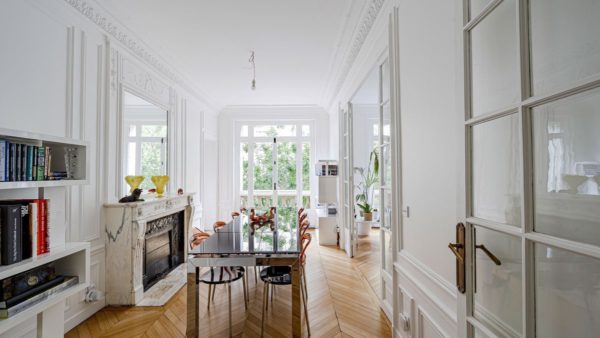Expert Insight, Breaking News, and Insider Stories on Real Estate in Paris
Parisian Rent Caps have arrived: Confusion ensues
In the wake of new rent control laws coming into force in Paris, the imprecision of its measures confound many.
What we do know:
On August 1st, new rent control regulations came into effect in the French capital within the framework of the Loi ALUR, for access to housing and renovated urban planning. It was initiated as an effort to control ever increasing Parisian rents which rose by 42% in the last ten years.
Referred to as the only “left-wing policy” of the Hollande presidency, the system has been “experimentally” established in central Paris, with the intention to spread the legislation to Lille next year and Grenoble in 2017. Under the law, the rental amount for new leases or rent renewals cannot exceed the reference rent particular to that property type and area by 20% nor be inferior to it by more than 30%.
For new tenants, the process is rather straightforward. As detailed in a previous Paris Property Group article, a free interactive map is available online to check the rental amount listed by a landlord or agency against reference rents for that area.
In order to set these reference rental amounts, the city of Paris was divided into 80 districts. Additional categories include property size and date of construction of the building.
According to OLAP, the observatory of rents in the Paris region, the measure will affect almost 20% of new leases signed after August 1st. Of these, one third of rents should decrease by 50 euros or less, another third by between 50 and 100 euros and the last third would drop by more than 100 euros.
Various points of confusion:
But reviews denouncing the new law’s imprecision have flourished since its creation, citing a number of factors that render its application puzzling and problematic.
Contentions aplenty:
With around 60,000 rental properties in central Paris being rented above the new maximum allowed rent, and another 25,000 under the minimum amount permissible, disputes may be plentiful in the wake of rent control. Courts run the risk of becoming seriously clogged in coming months.
Shifting reference rents:
Rent caps applicable in 2015 were derived from a sample of 23,000 new leases surveyed by OLAP in 2014, but reference rents will change annually. Those for 2016 will be based on data collected by Clameur, a group that analyzes the rental market. This means that there may be significant discrepancies in results from one year to the next.
Not efficiently enforced:
Clément Allègre of the CLCV, the National Association for the Defense of Consumers and Users, considers that since the law will not be regulated by an external entity, its application will rely solely on the “landlord’s good faith” and the “tenant’s vigilance”.
The process to challenge a rental amount that is above the maximum reference rent is no piece of cake. Asking the landlord directly is the first point of call. He or she may well just rent to someone else, but if intent on that property, the tenant may bring the matter to the local Conciliation Commission (CDC) and failing that, to the district court. However with most excessive rents applying to studios and one-bedroom apartments, often rented by students or young people with neither the means nor the sufficient knowledge to take matters to court, many will remain unchallenged.
Supplements for special features:
A section of rent control law provides for rental supplements to be added when a property presents a housing characteristic superior to similar properties in the area.
With no legal definition of these “features” specified by the legislation, a complementary measure that seems reasonable in theory becomes highly subjective in practice. What qualifies as a pleasant view? From what square footage does a balcony become a terrace?
According to Allègre, “the notion of rental supplements is so vague that it will allow landlords to get around the rent caps”.
Additionally, basic rent differs according to the number of rooms. However, the law states no legal definition of what qualifies as a room. One thing is certain, variable properties, such as 2/3 bedroom apartments will provide many a legal headache.
Set too low:
According to real estate agency Meilleursagents, the reference rents were “clearly set too low” citing their analysis of 28,000 property ads which revealed that 46% of them exceeded the maximum rent under the new rent control law as proof.
A homogeneity which doesn’t reflect reality:
Another criticism to be made against the rent reference system is that it “ignores existing heterogeneity in some areas of the capital”, according to Meilleursagents. CEO Sébastien de Lafond cites the example of the Clignancourt area, where the reference rent has been fixed at 22 euros per m2, whereas Meilleursagents finds a difference of over 30% between rentals near Montmartre averaging 29 euros/m2 and properties bordering the ring road, rented for less than 22 euros/m2.
Resting much of their case on the new law’s inherent vagueness, a number of real estate bodies are coming together against the legislation by filing appeals against it in a bid to overturn it.
Photo credit: Pixabay / Steve Pb
Contact Paris Property Group to learn more about buying or selling property in Paris.













